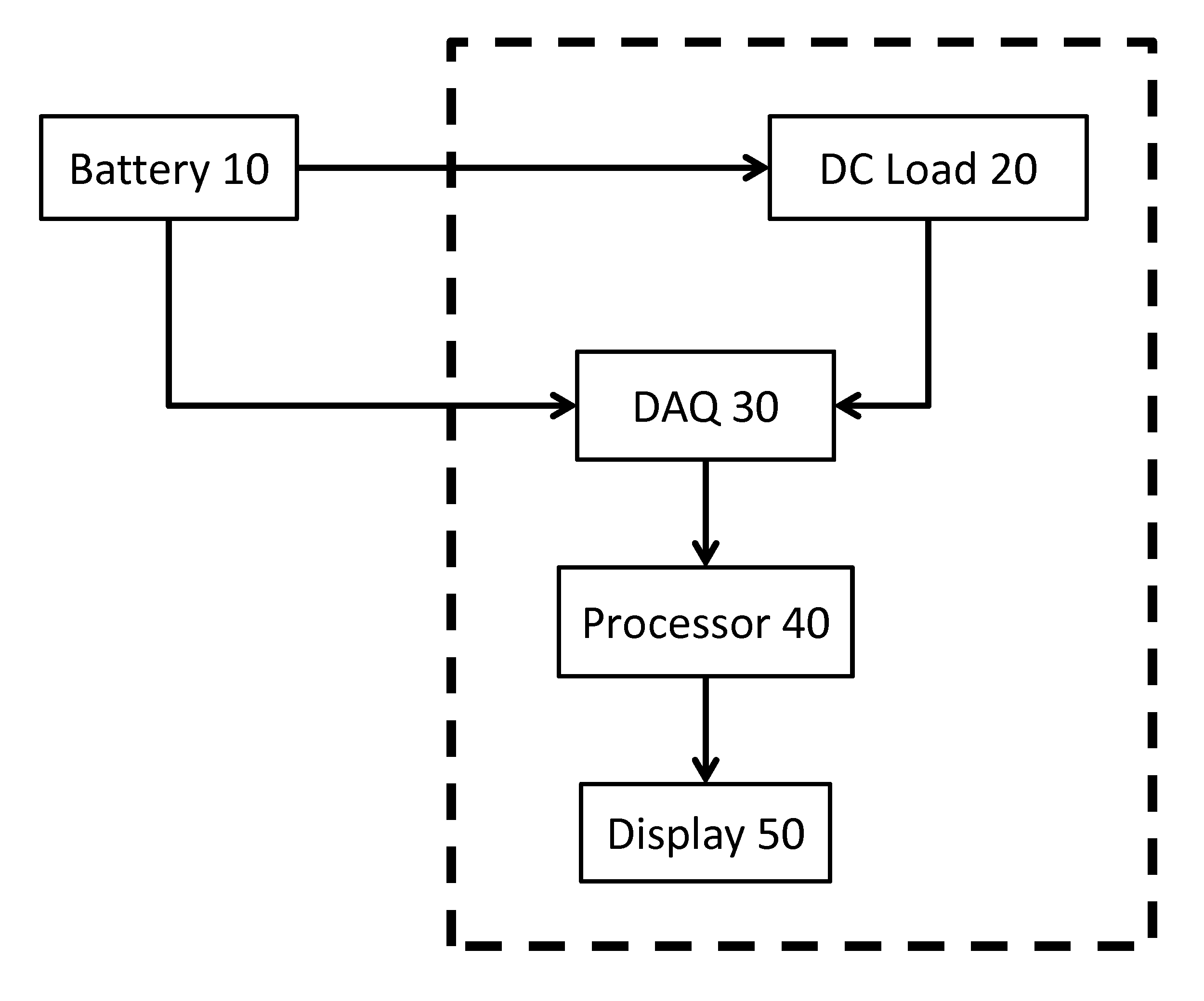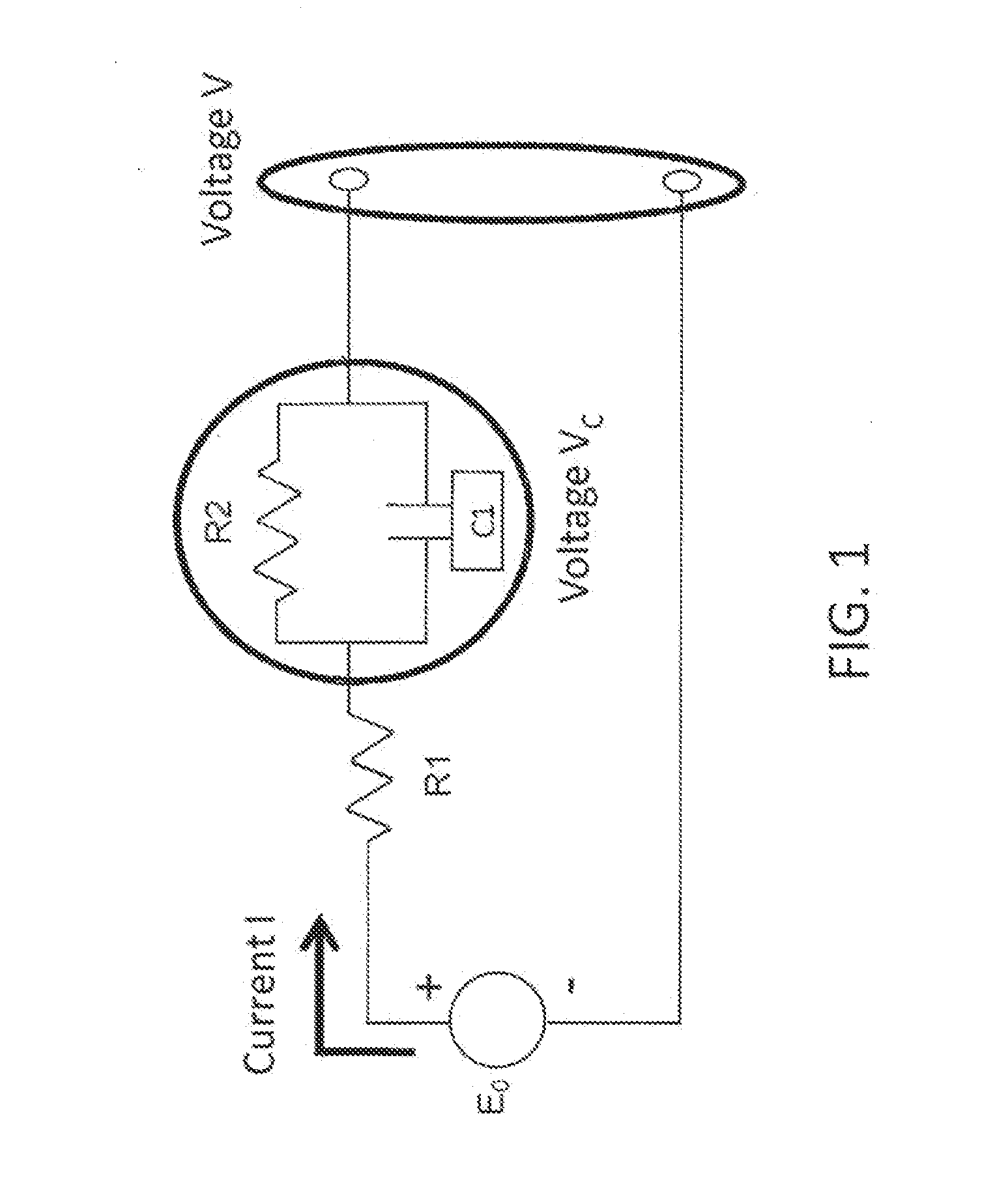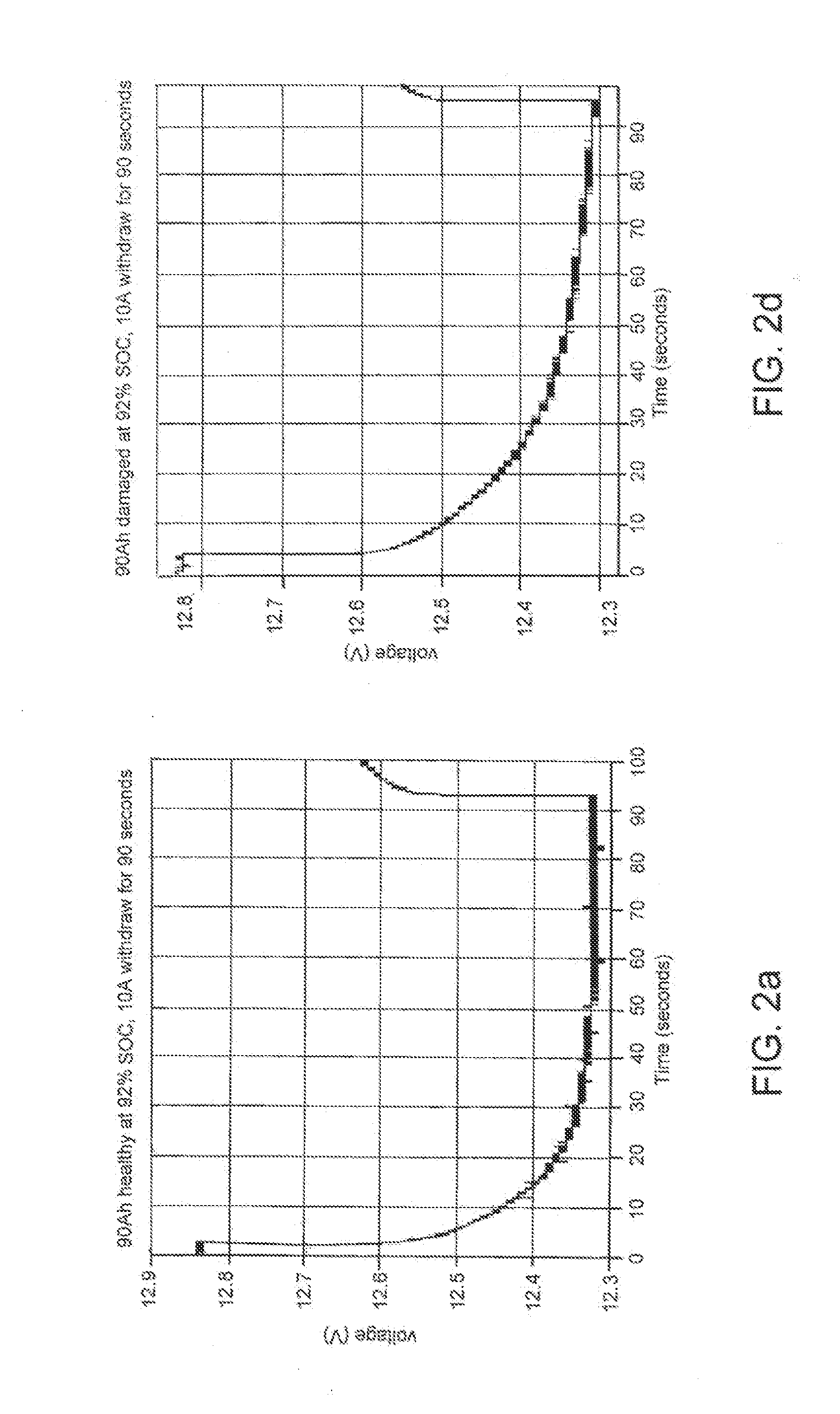Systems and Methods to Determine the Condition of a Battery
a battery and condition technology, applied in secondary cell servicing/maintenance, instruments, manufacturing tools, etc., can solve the problems of not directly measuring coulomb counting has the disadvantage of not being able to accurately measure the energy in the battery, and cranking test has the disadvantage of requiring a controlled temperatur
- Summary
- Abstract
- Description
- Claims
- Application Information
AI Technical Summary
Benefits of technology
Problems solved by technology
Method used
Image
Examples
first embodiment
[0041]FIG. 5 shows how to calculate the slope of the natural logarithm of the rate of change of the voltage VC according to various embodiments of the present invention. The measured terminal voltage V is annotated and shown as a function of time in FIG. 5. In a first embodiment, the processor 40 calculates the voltage VC as a function of time based on Equation (1). The open circuit voltage E0 is measured before the DC load 20 starts drawing current from the battery 10, the current I is measured while the battery 10 discharges, and the resistance R is calculated according to:
R=E0-V2IEquation(4)
where V2 is a voltage measured immediately after the DC load 20 starts drawing current from the battery 10 but before the terminal voltage V begins to curve. As shown in FIG. 5, V2 may be the voltage measured at the first data point after the DC load 20 starts drawing current from the battery 10. For example, V2 would be approximately 12.6 V based on the terminal voltage curve shown in FIG. 5....
second embodiment
[0043]The slope may be calculated by any appropriate method. For example, in a second embodiment, the processor 40 calculates the slope based on characteristics of the measured terminal voltage V. According to the right-hand side of Equation (3), the slope of the natural logarithm of dVc / dt may be expressed as −1 / R0C. R0 may be calculated according to:
R0=V2-V3IEquation(5)
where V3 is a voltage measured after the discharge from the capacitor C1 has stabilized. V3 may be estimated visually or by using the processor 40 to apply thresholds that account for noise in the measurements. For example, the processor 40 may select V3 when the voltage difference between successive data points is less than 0.01 V. In the example shown in FIG. 5, V3 is approximately 12.325 V. C may then be calculated according to:
C=t3-t24R0Equation(6)
where t3 and t2 are the times at which the voltages V3 and V2 were measured, respectively, as shown in FIG. 5. The slope is then calculated as −1 / R0C.
third embodiment
[0044] the slope may be calculated by using a discrete matrix representation of the system. In this approach, R, R0, and C are unknown parameters that are determined based on the measured terminal voltage V shown in FIG. 5 and a generalized inverse matrix. Equation (1) may be discretized and rewritten as:
VC(k)=E0−R*I(k)−V(k) Equation (7)
where k is an index of the dataset. Further, Equation (3) may be discretized and rewritten as:
R0C[VC(k+1)-VC(k)T]+VC(k)=I(k)R0Equation(8)
where T is the sampling rate. In this embodiment, both the terminal voltage V and the current I are measured as functions of time. The system may be represented by the following matrices:
[-I(k+1)+I(k)-V(k+1)+V(k)-I(k)] [R0RCR0CT(R0+R)]=-T[E0-V(k)]Equation(9)
This yields three equations having three unknowns, namely R, R0, and C. Equation (9) may then be used to solve for R, R0, and C, and the slope is again calculated according to −1 / R0C. At least three data points are required to determine R, R0, and C; however, an...
PUM
| Property | Measurement | Unit |
|---|---|---|
| temperatures | aaaaa | aaaaa |
| terminal voltage | aaaaa | aaaaa |
| threshold slope | aaaaa | aaaaa |
Abstract
Description
Claims
Application Information
 Login to View More
Login to View More - R&D
- Intellectual Property
- Life Sciences
- Materials
- Tech Scout
- Unparalleled Data Quality
- Higher Quality Content
- 60% Fewer Hallucinations
Browse by: Latest US Patents, China's latest patents, Technical Efficacy Thesaurus, Application Domain, Technology Topic, Popular Technical Reports.
© 2025 PatSnap. All rights reserved.Legal|Privacy policy|Modern Slavery Act Transparency Statement|Sitemap|About US| Contact US: help@patsnap.com



